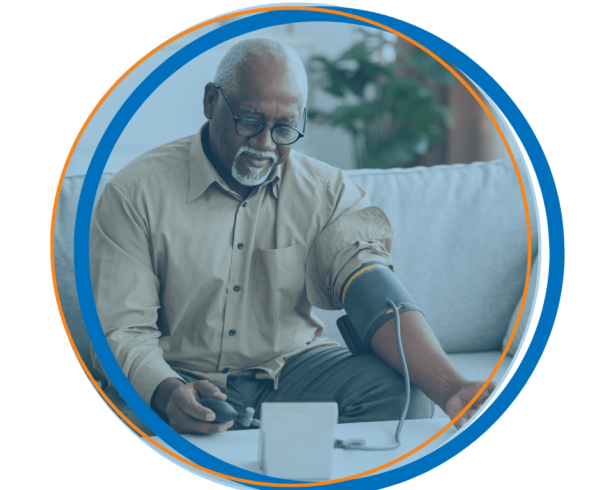 1. What is Telehealth?
1. What is Telehealth?
Telehealth, also known as telemedicine, is a mode of health care that uses secure digital technologies such as videoconferencing and telephone services to connect patients and providers. Telehealth enables patients to receive care from anywhere there is an internet connection. For many patients, this includes care from the comfort of their own homes. For tips on how to use telehealth, check out the California Telehealth Resource Center’s (CTRC) free infographic, available in English, Spanish, Vietnamese, and Cantonese.
2. What conditions can be treated via telehealth?
Telemedicine is not a one-size-fits-all care solution. However, many conditions can be diagnosed during a virtual visit. Often, selecting from a checklist of common symptoms via a secure online form is all that is required for a diagnosis, eliminating the need for an in-person visit. Once diagnosed, physicians can prescribe medications at your local pharmacy with the click of a button.
Acute Illnesses
Acute illnesses like the flu, earaches, back pain, and colds can come on suddenly. Typically, these conditions can easily be diagnosed during a telehealth appointment, allowing sick patients to receive care without leaving home. A study of the efficacy of telehealth for acute and chronic conditions revealed that, generally, telehealth improved patient outcomes.
Chronic Conditions
Unlike acute illnesses, chronic conditions such as obesity, heart disease, or arthritis can last months or persist over a lifetime. According to the Centers for Disease Control, chronic conditions cause 7 out of 10 deaths annually, and these diseases make up 86% of total U.S. health care costs. Innovative telehealth solutions such as remote patient monitoring enable physicians to easily monitor trends in key patient vitals and make timely adjustments to care management strategies, often introducing interventions well before worsening symptoms might otherwise lead to an office visit or trip to the emergency room.
In an email interview with the California Telehealth Resource Center, California Health Care Foundation Senior Program Officer Diana Camacho MPH gave her thoughts on the treatment of chronic conditions virtually, stating:
“Chronic care conditions risk overwhelming our health care systems if we do not find new strategies to manage them effectively. This is particularly true for our safety net delivery system, which cares for a disproportionate share of Californians with chronic illness while lacking resources and a workforce. Remote patient monitoring (RPM) empowers patients and creates stronger linkages to providers. As a result, I believe it has the potential to be a transformative tool to better manage chronic conditions and improve health care outcomes for those most at risk.”
Mental Health Conditions
Mental health conditions, such as depression, anxiety, and obsessive-compulsive disorder (OCD), can easily be treated through teletherapy, whereby mental health specialists can provide virtual therapy care and prescribe medication. This is especially helpful for patients experiencing severe depression who may have trouble leaving their homes.
Studies comparing the efficacy of teletherapy to in-person mental health care in adults find no significant differences in the quality of care for each modality, meaning teletherapy is a viable care alternative.
3. What conditions should NOT be treated via telehealth?
Not every condition can be treated virtually. Certain complex medical conditions, such as cancer, may require care and treatment in person. Consider heading to the clinic for these symptoms or care needs.
Severe Pain and Serious Health Indicators
Medical professionals recommend seeking in-person evaluation and treatment immediately if you or a loved one is experiencing intense pain. This is also true for potentially serious indicators of a health issue, such as chest pain, mental confusion, and signs of stroke.
Once a treating provider has ruled out the possibility of a medical emergency, telehealth may be a potential care option.
Physical Trauma
Physical trauma resulting from falls, accidents, or sexual assault should always be treated in person. These types of injuries require careful hands-on examination and treatment that can only be provided in person.
Prescription/Refill of Controlled Substances
In some cases, providers may be required to prescribe and refill controlled substances in person. Talk to your doctor to determine if you need an in-person medication and refills appointment.
The Limitations and Barriers of Telehealth
Although telehealth is a handy tool, there are limitations and multilevel barriers to telehealth spanning from individual patient care to health systems to policy. CTRC understands that telehealth is not feasible for delivering care under every circumstance to every patient. It is crucial to assess each situation for suitability for telehealth. Many clinics opt to implement hybrid services, which can offer an array of options to accommodate those who need to be seen in person and those who may not.
When it comes to virtual care, patients without access to a stable internet connection, basic technological literacy, or adequate technology can fall through the cracks. To ensure equity in telehealth services, it is critical to design telehealth tools and workflows to address a broad range of needs. It is important to include plain old telephone service (POTS) for audio-only visits on your health center’s menu of telehealth modalities. For assistance in creating more equitable telehealth services within your practice, contact the California Telehealth Resource Center at (877) 590-8144 or CalTRC@ochin.org.
4. How do I schedule a telehealth appointment?
If you would like your next appointment to be a telemedicine appointment, all you need to do is ask. The process is the same as scheduling an in-person appointment. Simply call your local doctor’s office and let the receptionist know that you prefer virtual care.
For information on providers in California, check out our provider locator tool and our list of specialty providers.
5. Do I have to pay for telehealth appointments?
Although you do not need to come into a clinic, telemedicine appointments still cost money. However, they tend to be cheaper than in-person or around the same price. Exact costs vary depending on several factors, such as whether you have insurance coverage and the terms of the provider offering telehealth services. Most health plans cover telemedicine services. If you are unsure of your coverage, contact your insurance provider.
Medi-Cal
Prior to the COVID-19 pandemic, state programs did not pay for telemedicine in most cases. However, the nature of the public health emergency prompted policy changes out of necessity. In March of 2022, the Consolidated Appropriations Act extended federal reimbursements for telehealth services. According to the California Health Care Foundation, the California Department of Health Care Services has committed to pay federally qualified health centers for video and audio telehealth visits during and after the pandemic, covering all Medi-Cal benefits and services.
6. How can I determine if my telehealth doctor is board certified?
Because telehealth is conducted virtually, this leaves open the possibility for scams. To ensure that you are consulting with a licensed physician, check the medical license search feature on your state medical board’s website. Contact their office via telephone if your state board does not have this online feature.
If you are a resident of California, you can check your physician’s licensure here.
7. What technology do I need for a telehealth visit?


- Camera
- Microphone
- Stable Internet Connection
If you are connecting to your appointment with a smartphone, it is unlikely that you will need anything else as they tend to have a camera and microphone built into the device. For more information on how to use telehealth, check out our comprehensive guide, available in English, Spanish, Vietnamese, and Cantonese.
Virtual Security
To ensure the safety of your health data, your telemedicine connection needs to be secure and HIPAA compliant. CTRC has a free, easy-to-read infographic with helpful virtual security tips for your next telehealth visit available in English, Spanish, Vietnamese, and Cantonese.
Your telehealth provider must present some type of consent form for your review before engaging in a telemedicine appointment. To ensure that your doctor is licensed to administer telehealth, do not go forward with any virtual services until the proper documentation is provided to you.
Struggling to Pay Internet Bills?
If you are struggling to pay internet bills, the Affordable Connectivity Program (ACP) and Lifeline are federal government programs that help eligible households pay for internet services and internet-connected devices. Eligible families who pair their benefits with one of the partnered internet providers can receive high-speed internet at no cost. Households may be eligible for both the ACP and Lifeline programs and can sometimes combine them with other state and local benefits where available.
Eligible households can enroll in the ACP through a participating broadband provider or by using an online or mail-in application. Households can apply for Lifeline online, by mail, or through a phone or internet company.
8. Will telehealth provide me with the same level of care as an in-person visit?
When it comes to personal health, everyone wants good care. A common concern regarding telehealth is whether it can deliver patients the same level of care as an in-person visit. Of course, this depends on the ailment, patient preferences, and the clinic. However, telemedicine has proven to be a highly effective mode of care—particularly for delivering teletherapy, acute illness care, or monitoring chronic conditions.
Conclusion
The California Telehealth Resource Center is your one-stop shop for all things telehealth. As a federally funded nonprofit, we work hard to ensure our information is accurate and unbiased. If you would like to access our inventory of patient resources, such as our provider locator tool, FAQs, and more, click here.
If you have questions, call us toll-free at (877) 590-8144 or fill out our contact form.






